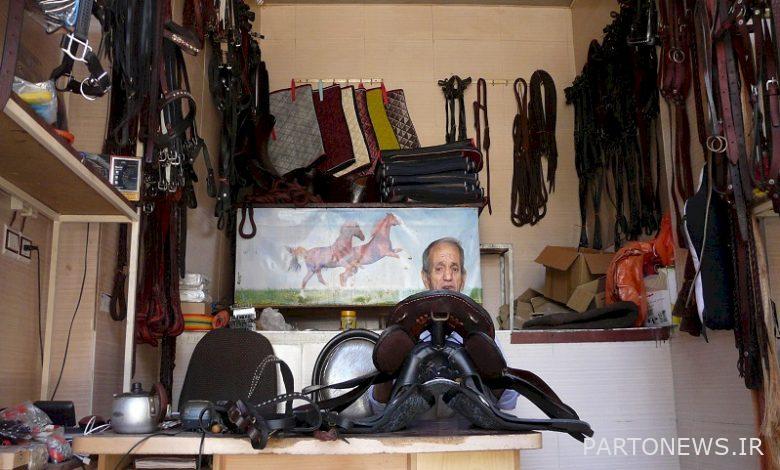Khoi, the ancient cradle of saddle and horse harness

In the historical bazaar of Khoy, which dates back to the Safavid period, there is a order called “Sarajan” in which leather embroidery industries have been produced and sold for many years, and since Khoy is a border city and there have been many military barracks in this area. Due to the use of equestrian equipment by the army in the equestrian category of this order, until the early Pahlavi, it was one of the most active orders in the historical market of Khoy.
However, after the arrival of the car and the change of people’s lives and the elimination of the equestrian field from the army, the production of fittings and equestrian equipment also decreased. However, the production and sale of fittings and saddles continues, and today horse saddles are one of the main productions of leather embroidery artists, which locals also call “Yehr”.
The artists of this field, after preparing leather and wooden chassis by carpenters and molding leather and sewing and hand-dosing, install leather on it. Equestrian waist, etc. also mentioned that its production in each workshop is an average of 10 saddles and accessories per week, and the annual production of leather embroidery workshops is about 2,000 saddles.
The employment rate in these units is four people per workshop and most of the workshops also use the capacities of home businesses in the production of equestrian equipment.
At present, out of 30 shops in Sarajan, two shops are active in the production of saddles and fittings, and the rest are active in the sale of leather goods, including bags and waists. The rest of the production units are scattered throughout the city.
The characteristics of the saddle produced in this simple and durable city of Boone are the use of the best Iranian leather, the use of a standard chassis that fits the back of the horse and its special beauty, and most importantly, it is cheaper, so that most artists in other cities buy saddles. They make engravings on leather and prepared saddles and sell the same saddles for 80 million Rials by creating added value for the purchased saddle for 30 million Rials.
60% of the products in this field are consumed domestically and the rest are exported to foreign countries, especially neighboring countries Turkey, Iraq, Armenia and Azerbaijan in the form of passenger cargo and smuggling, and this is one of the major problems of artists in this field.
Also, the main problems of artists in this field are marketing problems, so that brokers buy from manufacturers at the lowest prices and sell them at exorbitant prices.
Lack of customs facilities is another problem in this area, for example, Turkey prevents the entry of horse saddles, and as a result, exports to this country are done through smuggling.
Also, the improper import of saddles and fittings from foreign countries and the lack of insurance for artists in this field are other problems.
At present, considering that the field of equestrianism has been launched in most cities of Iran and the production of saddles and fittings has flourished again after years, in order to support the artists of this field, it is necessary to provide serious support from officials to Iranian products in equestrian and other fields. Use horse-related sports.
* Report from Aziz Mirzaei, Head of Khoy Cultural Heritage, Tourism and Handicrafts Department
.

